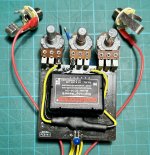DougieFresh
New member
I just finished a SpiritBox and the reverb effect is working (with the pots behaving as expected), but I'm getting a very noticeable hissing noise when the Depth knob is turned up. With Depth all the way down, I get a clean (no reverb) and loud guitar tone with no hiss at all. Also no hiss at all when bypassed.
I've tried by best to figure out the problem, but I've reached the end of my (limited) abilities. Here's what I've done so far:
(Edit: fixed image formatting...)
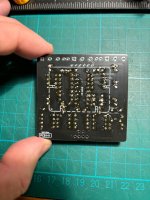
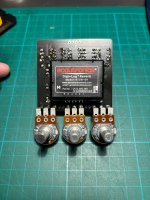
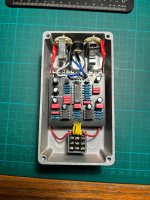
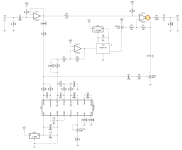
I've tried by best to figure out the problem, but I've reached the end of my (limited) abilities. Here's what I've done so far:
- Carefully inspected all components and reflowed all solder joints. Swapped out the two TL072s and PT2399, with no change.
- With the Depth turned all the way up, I poked around with a signal probe to see if I could identify where the noise starts, focusing on the inputs and outputs of the ICs. No noise coming off any signal outputs of the PT2399. For the first TL072 (labelled IC1 on the schematic), I hear the noise on OUTPUT B and no noise at all on the inverting and non-inverting INPUT B. For the channel A of IC1, and for both channels on the other TL072 (IC4 on the schematic), I get no noise on any inputs or outputs. I also get no noise on the input or two outputs of the Belton BTDR-2H.
- I verified that the problem is NOT with the TL072 chip itself… When I swapped the chip used as IC1 with the one used as IC4 (which had no noise on any inputs or outputs), I still still get the same noise only on IC1 OUTPUT B.
(Edit: fixed image formatting...)




Last edited:


